
All categories
Featured selections
Trade Assurance
Buyer Central
Help Center
Get the app
Become a supplier

(16585 products available)







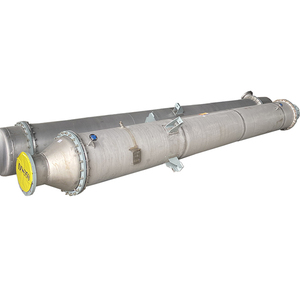
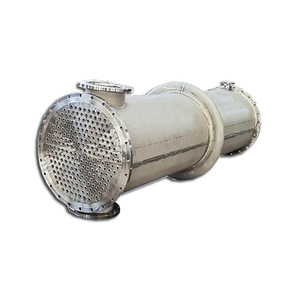
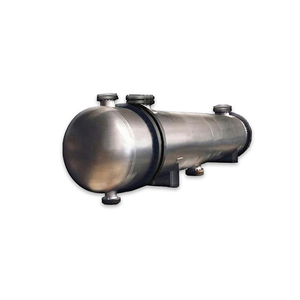
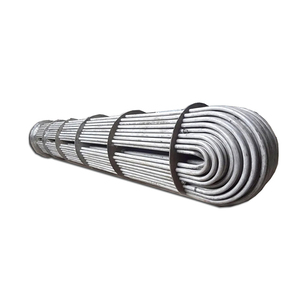









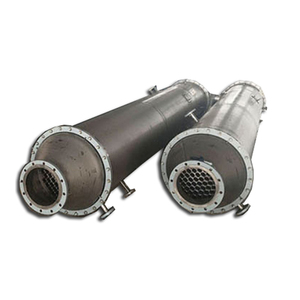





According to Huna Lee, Aluminum Tube Fin Heat Exchangers can be classified as condensers, evaporators and intercoolers.
Aluminum tube fin condenser:
The purpose of the Aluminum tube fin condenser is to convert the refrigerant gas into a liquid state by releasing the heat absorbed from the evaporator into the external environment. The Aluminum tube fin condensers can be divided into two ways based on the arrangement of refrigerant lines and airflow direction: (1) V-type condensers, which adopt a V shape; (2) flat condensers, which are parallel to flat fins. In terms of structure, there are also sub-types such as the one with a protective net and the one without it. The difference between them lies in the presence or absence of a protective net over the fins of the condenser. The protective net serves to prevent external objects from damaging the fins while maintaining optimal airflow passage.
Aluminum tube fin evaporator:
The function of the Aluminum tube fin evaporator is to absorb heat from the external environment and release the refrigerant gas into the space that needs to be cooled. In terms of structure, there are also sub-types such as the one with a protective net and the one without it. The protective net serves to prevent external objects from damaging the fins while maintaining optimal airflow passage.
Aluminum tube intercooler:
The main function of the Aluminum tube intercooler is to lower the temperature of compressed air by transferring heat between the compressed air and air or water. In terms of design, there are two models of the top and side models: the top model has a rectangular profile, and the side model is an OEM intercooler with a custom core. Side-mount intercoolers were used extensively on many domestic sports cars and imports in the late 1990s and early 2000s. It usually consists of an aluminum box, an aluminum core, an aluminum end, and silicone hoses.
The performance of an aluminum tube fin heat exchanger depends on its physical specifications.
Geometry:
The arrangement of tubes, fins, and spacing comprise the heat exchanger's geometry. The tube diameter commonly measures between 12 mm to 25 mm, and the fin height can vary from 10 mm to 50 mm, while the spacing between the fins usually within 1 to 3 mm. Modifications can enhance heat transfer and reduce air resistance.
Surface area:
Aluminum tube fin heat exchangers possess distinct surface areas for condensers, evaporators, intercoolers, and radiators. To illustrate, a typical aluminum condenser fin surface area may exceed 10 square meters, which can be customized for different condenser models.
Capacity:
Aluminum tube fin heat exchanger intercooler capacities are usually measured in tons or kilowatts (kW). One ton equals 3.517 kW. The intercooler's capacity determines the amount of heat it can absorb from the refrigerant. Aluminum tube fin heat exchangers can typically handle capacities ranging from 5 to 50 tons, depending on the specific application and design requirements.
Temperature and pressure:
The working temperature for aluminum tube fin heat exchangers is 180-190 centigrade. The pressure varies depending on the types heat exchanger and the refrigerant it works with, generally ranging from 1000 to 1500 psi.
To ensure optimal heat exchange efficiency, buyers can follow these maintenance recommendations:
Clean regularly:
Remove dust and debris from the exchanger's surface, as they can block air and coolant flow, reducing heat transfer efficiency. Use a vacuum cleaner or compressed air to blow out dust from the fins and tubes. For stubborn dirt, a neutral cleaning solution and a soft brush can be used to gently clean the surface.
Check for leaks:
Buyers can do a periodic check for refrigerant leaks in the aluminum tube within the fin heat exchanger. They can inspect the welds, joints, and connections for any signs of leakage. Should any leaks be discovered, promptly repair them to maintain the stability and safety of the system.
Pay attention to the fan and motor:
In a forced convection heat exchanger, the fans and motors are integral components. Regularly check the operation of these parts to ensure they are functioning correctly without unusual noises or overheating. Lubricating the fan bearings can also help reduce friction and improve operating efficiency.
Keep dry:
Moisture accumulation can lead to corrosion and mold growth to avoid dampness. Heat exchangers should be kept dry, and users should promptly remove any standing water or moisture from the exchanger's surface. Additionally, ensure that the surrounding air circulation is good to promote drying.
Apart from the automotive industry, aluminum tube fin heat exchangers are used in various industries due to their high surface area with a compact design.
HVAC systems
Aluminum tube fin heat exchangers are very commonly used in HVAC systems. Specifically, they are used as condensers or evaporators. Such units would extract heat from the indoor area and transfer it outside. As condensers, tube fins exchangers would facilitate the HVAC refrigerant to release heat to the airflow outside the system. On the other hand, as evaporators, they would absorb heat from the indoor airflow to enable the refrigerant to vaporize.
Commercial refrigerators
Heat exchangers are very important components in refrigeration systems. Refrigerators need to transfer heat quickly and efficiently in order to maintain cold temperatures. Tube fin heat exchangers are commonly used in commercial refrigerators as condensers or evaporators just like in HVAC systems.
In commercial refrigerators, tube fin condensers will release heat to the outside environment in order to facilitate refrigerating processes. On the other hand, evaporators will absorb heat from the inside of the refrigeration unit to lower temperatures and keep stored food cold.
Industrial processes
Tefin tube heat exchangers are also used in various industrial process applications. They can be used to cool or heat the process fluids in industries and factories. More specifically, they can support petrochemical, chemical, power generation, food and beverage, and pulp and paper industries.
The fins and tubes work by transferring heat from one fluid to the other. This helps to facilitate production processes in various industrial factory settings.
Oil and gas industry
In the oil and gas industry, tube fin heat exchangers are typically used for cooling purposes. They are commonly used to cool process gases or liquids. Sometimes tube fin heat exchangers can also be applied to waste heat recovery systems. And through this, they help to improve energy efficiency. The oil and gas industry is able to save energy by reusing the heat that has been extracted and processed through tube fin heat exchangers.
When choosing a tube and fin heat exchanger, business buyers should consider the following factors:
Core sizes
Business buyers should consider the core size of the aluminum tube fin heat exchanger they want to get for their applications. The core size determines the heat exchanger's dimensions, cooling capacity, and performance. Moreover, it is important to note that heat exchangers with larger core sizes provide higher cooling capacities. Also, they are suitable for demanding industrial applications. Business buyers need to analyze specific needs and select the appropriate core size.
Mounting style
Generally, aluminum tube fin heat exchangers have different mounting styles, such as vertical and horizontal. All of them have their own advantages and are suitable for different applications. Thus, business buyers need to evaluate their specific application requirements to select an appropriate heat exchanger with the right mounting style.
Tube sizes
Business buyers should also consider the tube size of aluminum tube fin heat exchangers. Tube sizes determine the flow capacity and pressure drop of the heat exchanger. Heat exchangers with larger tubes offer higher flow rates and lower pressure drops. They are suitable for applications requiring large fluid volumes. Business buyers should choose appropriate heat exchangers based on the fluid volume flow.
Tfin designs
Aluminum tube fin designs are usually a combination of triangular, oval, belt, double wedge, and other tfin formats. Each tfin design has its unique characteristics, such as different shape sizes, optimizing heat transfer coefficients, and reducing pressure drops. Business buyers should opt for a specific tfin design based on particular working fluids.
Fin spacing
Fin spacing is another factor business buyers should pay attention to when choosing aluminum tube fin heat exchangers. Fin spacing affects the heat exchanger's surface area, airflow, and heat transfer. Fin spacing with large spacing provides less airflow resistance, higher flow rates, and a cooling decline. However, fin spacing with small spacing offers a compact size and high heat transfer efficiency. Business buyers need to select proper fin spacing according to available installation space and cooling requirements.
Q1: Which industries use heat exchangers?
A1: A wide variety of industries utilize heat exchangers to improve efficiency and reduce energy consumption. They include the chemical processing industry, food and beverage industry, power generation industry, oil and gas industry, HVAC industry, pulp and paper industry, metal processing industry, municipal waste industry, semiconductor industry, and solar energy industry.
Q2: What are the trends in heat exchanger technology?
A2: Recent trends in heat exchanger technology include the increasing use of compact heat exchangers, new materials, enhanced heat exchanger design, and retrofitting existing heat exchangers for better performance.
Q3: What is a tube fin heat exchanger?
A3: A tube fin heat exchanger is a compact heat exchanger that usually consists of two or more fluid streams. Aluminum tubes with thin protruding fins make up the large surface area between the tubes. The fins promote heat transfer between the fluids flowing in the tubes and across the fins.
Q4: What's the connection between heat exchangers and HVAC?
A4: In an HVAC system, heat exchangers are used to control temperature, recover energy, and improve indoor air quality. Both shell and tube heat exchangers and plate heat exchangers are commonly used in HVAC systems. They help to transfer heat from one fluid to another, without letting the fluids mix.